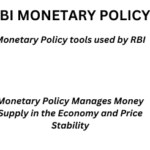India becomes 4th largest forex reserves holder globally: Basics Explained

India’s foreign exchange reserves rose by $835 million to touch a record high of $612.73 billion in the week ended July 16, 2021, the Reserve Bank of India (RBI) data showed.Currently, China has the largest reserves followed by Japan and Switzerland. India has overtaken Russia to become the fourth largest country with foreign exchange reserves.
LEARNING FROM HOME/ WITHOUT CLASSES/ BASICS
Foreign exchange reserves are assets denominated in a foreign currency that are held by a central bank.
Forex reserves are external assets in the form of gold, SDRs (special drawing rights of the IMF) and foreign currency assets (capital inflows to the capital markets, FDI and external commercial borrowings) accumulated by India and controlled by the RBI.
In India, the Reserve Bank of India Act 1934 contains the enabling provisions for the RBI to act as the custodian of foreign reserves, and manage reserves with defined objectives
Foreign exchange reserves are the foreign currencies held by a country’s central bank.A strong position in foreign currency reserves can prevent economic crises caused when an event triggers a flight to foreign currency from domestic market. They are called reserved assets in Balance of Payments and are located in capital account.
- The most important reason to have reserve is to manage one’s currencies values. They are usually used for backing the exchange rate and influencing monetary policy.
- Reserves are always needed to make sure a country will meet its external obligations. These include international payment obligations, including sovereign and commercial debts. They also include financing of imports and the ability to absorb any unexpected capital movements.
1 .The most significant objective behind this is to ensure that RBI has backup funds if their national currency rapidly devalues or becomes altogether insolvent.
- If the value of the Rupee decreases due to an increase in demand of the foreign currency then RBI sells the dollar in the Indian money market so that depreciation of the Indian currency can be checked.
- A country with a good stock of forex has a good image at the international level because the trading countries can be sure about their payments.
- A good forex reserve helps in attracting foreign trade and earns a good reputation in trading partners.
India’s robust and swelling foreign exchange reserves provide confidence to credit rating agencies and prospective foreign investors that external obligations of the country can always be met and that India has the ability to manage the balance of payments. Hefty reserves guarantee timely payment for repatriation of profits and portfolio outflows, both crucial to attract direct and portfolio foreign investments
The High Level Committee on Balance of Payments (Chairman: C. Rangarajan), 1993, had recommended that the target for foreign exchange reserves be fixed in such a way that they are generally in a position to accommodate imports of 3 months. It may also be noted that the Committee on Capital Account Convertibility (Chairman: S.S. Tarapore), 1997 suggested an import cover of 6 months.
.



0 Comments